The irrigation system is an integral part of the golf course asset. Like the roof on the clubhouse, the irrigation system is absolutely necessary but nobody wants to invest in an irrigation upgrade.
Most Superintendents know this. They also know one other fact; getting irrigation upgrade approval and money is the hardest sell of all.
Irrigation Upgrade Dilemma
Superintendents are pretty good at patching up irrigation problems or covering up bad irrigation issues with nobody noticing.
Every Superintendent has heard something like, “Well the course looks good so the irrigation system must be OK. Can we get by another year?” Unless decision makers physically see and feel the pain they will always put off an upgrade.
Owners, managers, committees are not horrible people who want a Superintendent to suffer. They just don’t understand. It all seems fine to them and they don’t know what the superintendent is living through to make it appear so.
To gain approval for an irrigation upgrade a superintendent has to present a sound financial case. The pain has to be exposed and the solutions offered.
Why Upgrade Your Irrigation System?
Labor Time Savings
An ageing and or unsuited irrigation system eats up more time than most realize. Few Superintendents have excess labor hours available; most don’t have enough to get their basic job done.
If a course is attempting to improve its product, as most are, then where the labor time comes from is a big question. Believe it or not, the time issue is the normally the biggest cost factor reduced by an irrigation upgrade.
The real cost is lost opportunity. What could have been done with the wasted hours to improve the course?
Supply Cost Savings
Water, electricity, and chemicals. All can be reduced when a proper irrigation system is available. Some struggle to see the savings because they are used to it and assume the cost has to be there.
Some, like electricity and water are easily estimated. To prove potential savings, talk with those who experienced them. Certainly there is a Superintendent close by who upgraded in the last couple of years who will attest to supply savings.
Golf Course Enhancement
Most golf courses are trying to improve their course quality. Golfers have become more demanding. Hands down, a good irrigation system will give the Superintendent a tool to improve the course quality.
A wise Superintendent at a top level club once said keeping his course in the shape their members demanded was 1/3 mowing (equipment and practices), 1/3 chemical (usage and judgement), and 1/3 irrigation. His irrigation upgrade a couple years ago allows him to and operate almost entirely automated. That 1/3 of his management is now easier.
Irrigation System Useful Lifespan
Sprinklers– 10 years
After which at least nozzles need replaced. Good sprinklers can last 20+ years unless poor water quality or abuse causes earlier wear.
Benchmark: If you need to repair more than 2% of your sprinklers each year due to non-induced failures, it may be time to replace them.
Control System– 9 years
Technology changes. Perhaps you don’t have to replace the whole control system, but at least upgrade over time to remain current.
Piping Network– 30 years
Or longer if well installed. Poorly installed or undersized piping is never OK and needs replaced.
Benchmark: If experiencing more than 2 pipe failure per year or your volume capacity is too low, your piping network needs work.
Pump Station– 18 years
Good maintenance and periodic rebuilds will extend even longer. Pump controls need to updated every few years as technology improves.
Benchmark: Analyze power consumption to determine pump rebuild or replacement time. More later.
Recommendations and Practices
Keep Records!
Tracking every repair is important. Be sure to document the cost of parts/replacements and labor. But also document the cost to repair resulting damages. Example, a pipe break may only cost $35 in parts and an hour or two of labor. But the wash-out took another 5 hours to fix.
Organize your records to show your repair work on an annual basis. One Superintendent made a map of his irrigation system on a large tack board. He then stuck pins at the locations where repair work was performed. He placed pins going back 5 years. His resulting map made a very effective tool to show his board their dilemma.
Document Customer Perceptions
Because the irrigation system is so critical for course quality, customers/members have a say in when it’s time to upgrade. Really, what do they know about an irrigation upgrade? Probably nothing, but they do know if they like playing your course!
Consider Suitability
As demands change so too does the capability of the irrigation system. While your system may be marginally acceptable operationally, you may be missing the boat for turf quality, play quality, regulatory requirements, and irrigation needs.
Example: Maintaining good play conditions means you need tight control of your irrigation water application. Application is measured by Distribution Uniformity (DU). If your DU is poor, you will by necessity over irrigate much of a green to get enough water to your dry areas. How can you maintain a certain ball speed when you apply different amounts of water to various areas of your green?
Example: You are being watched for run-off into a stream or pond. Your system DU is poor, which means you have to over irrigate large areas of your course to get your dry spots covered. This is a prime cause of run-off.
Even when operating OK, does your irrigation system meet the need of your course? If not, time to upgrade.
Using Current Technology
A state-of-the-art irrigation system installed 40 years ago is now 5 generations behind the latest technology. The advancements all contribute to giving the Superintendent a better management tool.
Do we expect companies to operate well using 40, 20, or even 15 year old computers, phone systems, or copiers? The irrigation system is a technology system for maintaining your turf; it too must be upgraded for best results.
Cost Justifying an Irrigation Upgrade
Irrigation Upgrade: Sprinkler Repair Cost
Failures generally induce folks to replace sprinklers. But please look at performance too. The sprinkler is the workhorse of your system. Can’t get good results from a poor workhorse!
Example: Given sprinklers have a useful life of 15 years, an average cost of $190 each, and you have 1,000 on your course.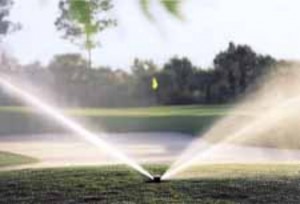
When annual sprinkler maintenance costs approach 2% of your total investment, $3,800 in this case, consider replacement.
Your annual maintenance cost is the total costs for;
- Parts- What you paid for the parts and product.
- Labor- All labor hours to complete the repairs multiplied by your hourly cost for labor.
Please consider collateral damages or the cost to fix damages to the course or lost business because play was impacted.
Example: 30 sprinklers required new internals, solenoids, or drive motors. Your hourly labor cost is $45.
- Parts- $75 each x 30 sprinklers = $2,250
- Labor- 1.0 hour each x $45/hr x 30 sprinklers = $1,350
- Collateral- 1 hour each x $45/hr x 30 = $1,350
Total Repair Cost= $4,950
The service cost of $4,950 per year is higher than 2% of the total investment ($3,800). Replacement should be considered.
Ideally, you want a very low service cost. Every dime you spend on service adds to the Total Cost of Ownership. Given the service cost calculated above for all 15 years, your Total Cost of Ownership for those rotors would be;
- Purchase Cost = $190,000
- Service Cost = $74,250
Total Cost of Ownership = $264,250
Or $264 each. Obviously, a sprinkler with an overall lower service cost will save money for its lifespan.
If the above sprinklers only need $1,000 per year, then the Total Cost of Ownership would be $205 each. That would be $59,250 over those 15 years that could have been spent for something else.
Performance
Auditing is a good tool to measure sprinkler effectiveness. Collection cups are placed to gather sprinkler water, some math is done, and the resulting Distribution Uniformity (DU) number tells you how evenly water is being applied.
Poorly laid out sprinklers, sprinklers in poor repair, and bad hydraulics will cause a low DU. A good DU target is 0.70 or higher. DU drops as sprinklers wear or maintenance is not current.
When you operate with low DU, there are wetter and dryer areas in your irrigated area. If you are fighting such conditions, it means extra time for maintenance to sustain suitable turf quality. Also means you are wasting water. Are you dragging hoses? Then sprinkler performance and/or layout needs accessed.
DU is effected by the operating pressure, spacing, and nozzle selection. Correction can be as simple as adjustments at the pump station or new nozzles. However, piping changes are often necessary, which are much more expensive.
Irrigation Upgrade: Control System
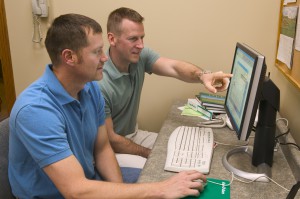
Suitability
A golf course control system is really and in-the-field- computer network. Like computer networks in the office, technology has been moving forward at a fast pace. What was the thing 10 years ago is now obsolete.
However, being old doesn’t mean your central is not doing the job. As long as you are happy with its performance and you can still get parts and support, your central control may give you a many more years.
Soundness
If your central is plagued with failures the case is simple. A Superintendent cannot manage the course with such a system, period. It’s time to repair or replace.
You also be facing obsolescence. Some manufactures introduce a new central every 8-10 years and when they do they obsolete earlier centrals. Eventually getting support or parts to keep their old centrals operational becomes very difficult.
Irrigation Upgrade: Pump Stations
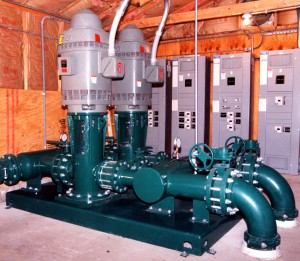 Pumps must be maintained and periodically evaluated. The evaluation will look at two factors; does the pump do the job necessary (suitability) and does it do so efficiently?
Pumps must be maintained and periodically evaluated. The evaluation will look at two factors; does the pump do the job necessary (suitability) and does it do so efficiently?
Suitability
A pump station is sized and built for the pumping task it must accomplish. Given a pump station was properly designed, installed, and maintained you may find it lacking in suitability 10 years later because pumping requirements have changed.
Many reasons may cause unsuitability; the biggest is golf courses tend to add demands of their irrigation system. After your piping system, the pump station is the biggest cost of an irrigation upgrade.
Efficiency
When looking for reductions in operating cost, efficiency of the pump station can make a big difference. Obviously the fewer hours a pump station must run will cause a reduction in electrical power and maintenance on the pump station.
Step one is to have a high DU irrigation system that will likely reduce run time 15 to 30%. Second is to have a pump station designed for the need, properly installed, and well maintained.
Analyzing Pump Station Efficiency
You can measure the fuel efficiency of a pump station with the Nebraska Energy Use standards. Running the numbers is an eye-opening event even if the pump station is correct. Most don’t understand what the pump operating costs really are.
Example:
- Irrigated acres = 122
- Discharge rate in GPM = 750
- Total Dynamic Head (TDH) = 369
- Total application depth in inches = 18
- Total fuel bill for season = $12,641
- Fuel price per unit = $0.08 per kilowatt-hour
- Total Dynamic Head = 369 ft
- Flow Rate- 750 gpm
- Estimated repair/upgrade cost = $16,000
Step 1: Determine Water Horsepower
WHp= TDH x GPM/3,960: 369 x 750 / 3,960 = 69.88, or 70 WHP
Step 2: Determine Hours of Pumping
Either gather from meters or calculate.
T = D x A x (453 / Q) 18 x 122 x (453 / 750) = 1,326 hours
- T = Hours of pumping
- D = Depth of application in inches
- A = irrigated acres
- Q = Flow rate in GPM
Step 3: Estimate Hourly NPC Fuel Use
FU = WHP / NPC 70 / 0.885 = 79 KW per hour
- FU = Hourly fuel using the Nebraska criteria
- WHP = Water Horsepower
- NPC = Nebraska performance criteria. See table
| Nebraska Performance Criteria (NPC) | ||
| Energy Source | WHP-HRs per unit of fuel | |
| Diesel | 12.5 per gallon | |
| Propane | 6.89 per gallon | |
| Natural Gas | 61.7 per MCF | |
| Electricity | 0.885 per KWH | |
Step 4: Estimate Seasonal NPC Fuel Cost
SFC = FU x HR x Cost 79 x 1,326 x $0.08 = $8,380
- SFC = Seasonal Fuel Cost if operated at NPC
- HR = Hours of operation
- Cost = $ per fuel unit
Step 5: Determine Excess Fuel Cost
EFC = AFC – SFC $12,641 – $8,380 = $4,261
- EFC = Excess fuel cost
- AFC = actual fuel cost
- SFC = Estimated seasonal fuel cost via NPC
Step 6: Determine Annualized Repair Cost
ARC = INV x CRF $16,000 x 0.1295 = $2,072
- ARC = Annualized repair cost
- INV = Investment required to repair or upgrade
- CRF = Capital recovery factor. See table.
| Capital Recovery Factors (CRF) | |||
| Years | Interest Rates | ||
| Useful Life | 5% | 7% | 10% |
| 2 | 0.5378 | 0.5531 | 0.5712 |
| 3 | 0.6372 | 0.3811 | 0.4021 |
| 4 | 0.282 | 0.282 | 0.3155 |
| 5 | 0.231 | 0.231 | 0.2638 |
| 7 | 0.1728 | 0.1728 | 0.2054 |
| 10 | 0.1295 | 0.1295 | 0.1627 |
| 15 | 0.0963 | 0.0963 | 0.1315 |
Assuming a useful life of the intended upgrade or repair is 10 years and the interest rate will be 5%.
Bottom line
The expected annualized repair/upgrade cost (ARC) comes out to $2,072. Your calculated excess fuel cost was $4,261. Because the ARC is less than the Excess Fuel Cost (EFC), the upgrade/repair is worth the investment. That’s simply based on fuel savings and considering capital recovery factors.
Once you know your Excess Fuel Cost, you can divide it by the CRF to determine how much is warranted to invest in repairs or upgrades.
Example: EFC $4,262 / CRF 0.1295 = $32,911.
In other words, fuel savings justify spending up to a maximum of $32,911.
Irrigation Upgrade: Piping Network
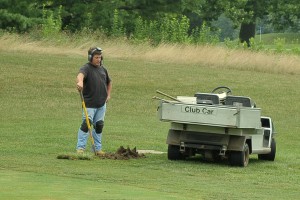 Replacing your piping network is the most costly and disruptive portion of your system. Many try to make due with what’s in the ground and sometimes that can work out. Here are the two inescapable reasons why you will replace your piping;
Replacing your piping network is the most costly and disruptive portion of your system. Many try to make due with what’s in the ground and sometimes that can work out. Here are the two inescapable reasons why you will replace your piping;
Unsuitable
Often irrigation systems installed years ago have pipe that is now too small to support the irrigation system your course really needs. Most systems need more water at higher pressure than those 20 years ago to meet the irrigation requirements. If you are not fulfilling the requirements, then why bother spending the money?
Sprinklers depend on a certain amount of water (gpm) at a certain water pressure (psi) to work. If the hydraulics is not correct, the system is crippled. That’s when a pipe system replacement is warranted.
Unsound
Many older pipe networks are not mechanically sound. Too many failures. If you cannot count on your pipe system to remain in operation, any investment into the irrigation system will be a frustrating fiasco.
A good pipe network should have no failures. Failures are costly, disruptive, and cause damage to other parts of your system. If an existing pipe system is sound and of suitable size, then use it! If struggling, replace it.
Financing an Irrigation Upgrade
 The hardest part is getting the money to pay for an irrigation upgrade. You have a much stronger position when talking with numbers. The above will give you what you need in that regard.
The hardest part is getting the money to pay for an irrigation upgrade. You have a much stronger position when talking with numbers. The above will give you what you need in that regard.
If you are member based course you may be able to get members to help. Now it comes down to the politics of the club and strength of the superintendent’s position within it. I defer to the experienced to learn how to get a project approved.
There is a tool until recently was not widely available; Financing. The finance companies now have programs for irrigation systems. The cost of financing is very low right now. It’s something you should look into.
Irrigation systems are a long term asset. Most long term assets are hard to pay for from operating capital in a single year. Why should the expense of a major system be absorbed in one year when it is expected to last 20 or more years? Kind of like paying your cable bill for the next 20 years all in one payment right now.
Other than tax reasons, expending such a large amount of cash is probably not as healthy as financing it. Talk with your financial people. We’ve completed several financed projects. They’ve been simple and fast. Appears to be a good answer, better than suffering through yet another year.


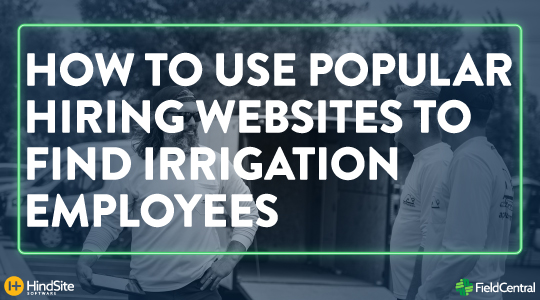
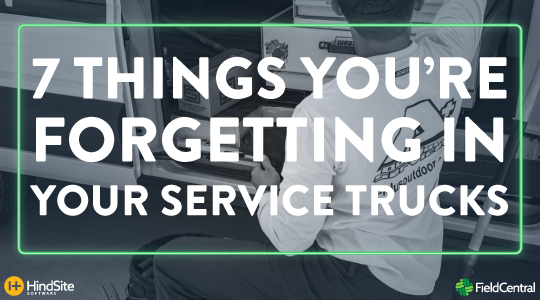
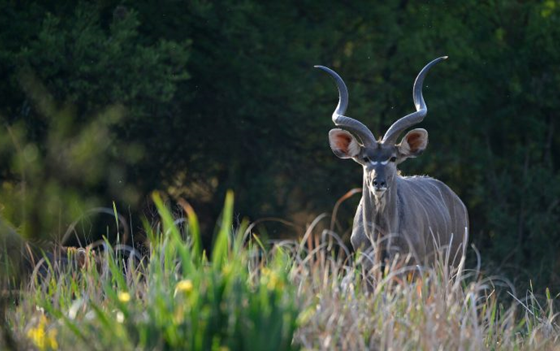


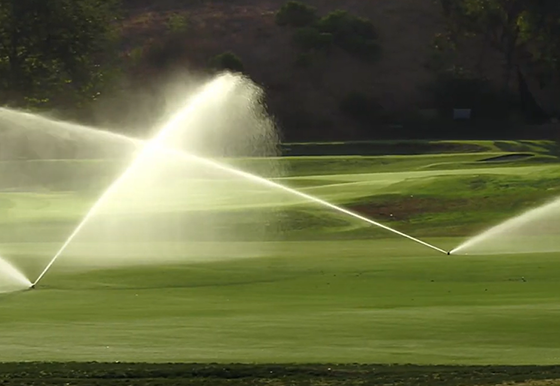
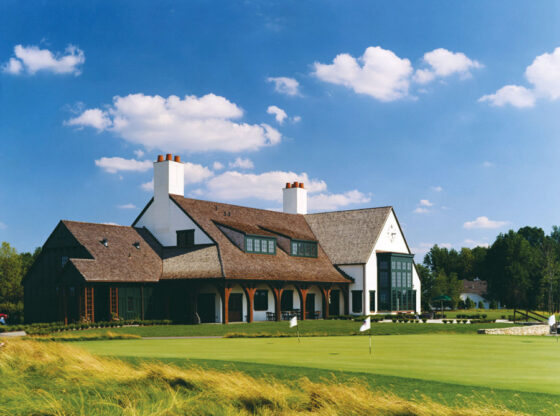
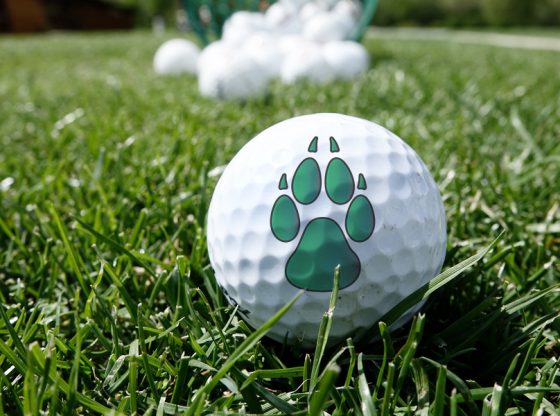
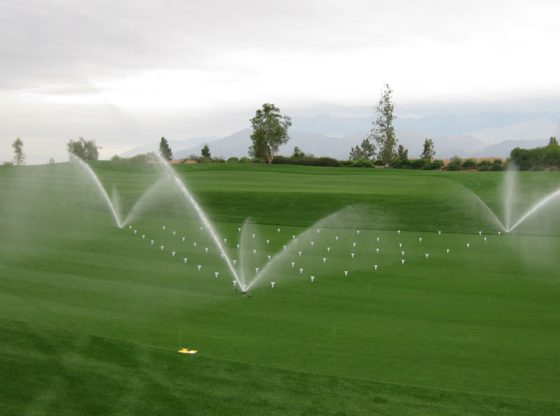
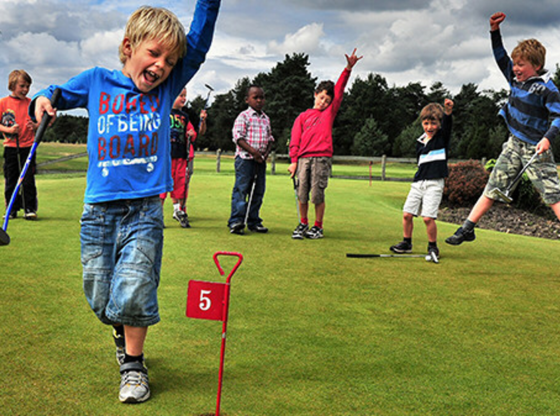

It is good to know what a time saver an upgrade in both sprinklers and technology can do for me. My husband and I spend so much time in our yard and we don’t want to be there any more than is necessary. I will have to discuss with him the option of improving the current system we have. Thank you for educating me.